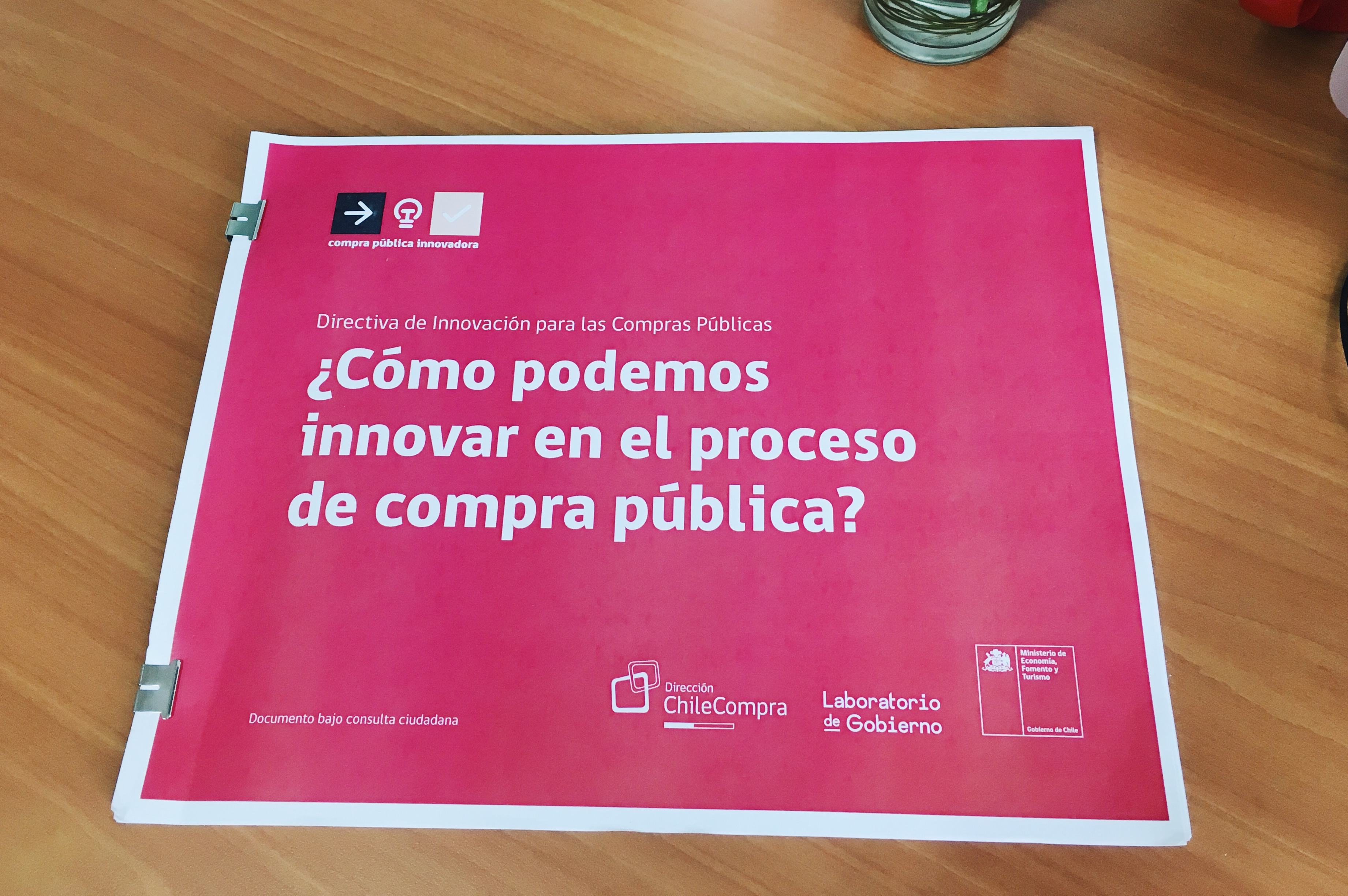The law about “Bases on administrative contracts for supply and provision of services,” number 19.886, describe the general conditions, requirements, and procedures that public services and suppliers must follow to generate dealings to acquire product or services. At the same time, define the Public Procurement Board’s role in this scenario, and the functions that must dispose to achieve this purchases effectively.
The first time I read the law it looked clear to me. I, who had never read a bill before, understood the procedure’s condition and the technical details of each stage. But the first thing that caught my eye was the rule of pushing each public service to detail precisely what they want to buy. Whatever they want, they have to give all the details to enable a great offer and a quantifiable evaluation. That, of course, restrict the system of transactions in a logic focused on products and their characteristics.
From that dynamic, were designed groups of products and services with levels of depth where each institution has to match what they want to buy with what the system offer. This demands, in the requesting areas, a perfect tagging of their bids to enable a precise business opportunity for suppliers. The effort is enormous in both parts because, due to inadequate labeling, some tenders never get offers nor see the public light.
Unfortunately, the reality is different. In many interviews, usability tests, and workshops with public servants, the first thing that appears regarding purchase procedure is the lack of intern clarity about what to buy. Those who request do not know what they want precisely, and then, there’s a stage of “interpretation” from the different areas that build the bid. Eventually, this affects the bid’s content and generate more questions than answers. On the other side, the symptom is the same: suppliers stated that “public institutions don’t describe with precision what they want. Sometimes they don’t even know.”
Then, it won’t be easy to request a solution for a need instead of a product?
From the request to the dialogue.
From the innovation area at ChileCompra, Cristian Carreño had push with Economy Ministery and Laboratorio de Gobierno a project called “Innovative public purchase.” The project seeks to “spread a new logic in the public service’s purchase, focusing on the needs and concerns of each institution.” Based on three principles, three phases guide the institution into a pertinent, transparent, and linked with users purchase. With the consequences of reaching a broader efficiency.

The past month was released the “public consultancy of the directive innovation for public procurement” where National Police, SERNAC (National Service of Consumers), and The Metropolitan Park were part of the test that probes this tool. The directive promotes a set of tools to be used during the purchasing process and helping the management of a better acquisition. Each tool lies in the institution’s legal context, despite the particularity of each one.
Tremendo panel de compra pública innovadora con @LLGACities CEO de @CitymartTeam, Trinidad Inostroza directora de @ChileCompra, @EduardoBitran vicepresidente de @Corfo, Natalia Piergentili subsecretaria de economía @EconomiaSubse y @juanfelopez director ejecutivo del @labgobcl 👏 pic.twitter.com/hQnQ0o1oPL
— Elisa Briones (@elisabriones) January 23, 2018
Nowadays, the directive is open to reviews and is the first step towards a new mindset among public institutions. Today, the products and services that civil servants want to buy are defined in silos, and the spaces of discussions between who request and who perform are almost none. A second step, more ambitious but needed it, it will be to ought mechanisms to foster the purchase of better solutions for new, or undefined, needs.
Although the directive belongs to a guide with “recommendations to incorporate practices and tools” (page 10), these are trying to shift the “addressing the technical request to the acquisition area” into a “actors working collaboratively.” It is an ambitious change in the public servant’s culture and, for that reason, the question raised by Alejandro Barros about the “incentives for change” has complete sense.
The directive is framed in what the law defined as “describing the product in the bid,” but still is a practical tool to test the improvement of the bid’s document. It is a personal aspiration seeing an achievement in the purchases of public services through a service design mindset and, in a short-term period, set up the logic of prototype and test in the design of policies.
